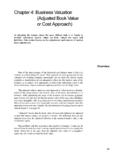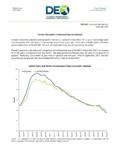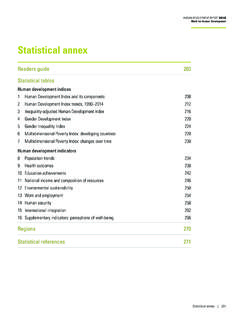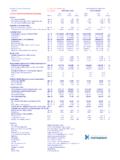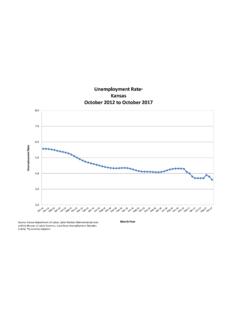Transcription of Transmission of material in this release is …
1 Transmission of material in this release is embargoed until USDL-18-1279. 8:30 (EDT), Friday, August 10, 2018. Technical Information: (202) 691-6555 Media Contact: (202) 691-5902 REAL EARNINGS JULY 2018. All employees Real average hourly earnings for all employees were unchanged from June to July, seasonally adjusted , the Bureau of Labor Statistics reported today. This result stems from a increase in average hourly earnings combined with a increase in the Consumer Price Index for All Urban Consumers (CPI-U). Real average weekly earnings decreased percent over the month due to no change in real average hourly earnings combined with a decrease in the average workweek. Chart 1: Over-the-month percentage change in real average hourly earnings for all employees, seasonally adjusted , July 2017 July 2018.
2 Percent Change Jul '17 Aug Sep Oct Nov Dec Jan Feb Mar Apr May Jun Jul '18. Real average hourly earnings decreased percent, seasonally adjusted , from July 2017 to July 2018. Combining the change in real average hourly earnings with the increase in the average workweek resulted in a increase in real average weekly earnings over this period. Production and nonsupervisory employees Real average hourly earnings for production and nonsupervisory employees decreased percent from June to July, seasonally adjusted . This result stems from a increase in average hourly earnings combined with a increase in the Consumer Price Index for Urban Wage Earners and Clerical Workers (CPI-W). After combining the change in real average hourly earnings with no change in average weekly hours, real average weekly earnings were unchanged over the month.
3 Chart 2: Over-the-month percentage change in real average hourly earnings for production and nonsupervisory employees, seasonally adjusted , July 2017 July 2018. Percent Change Jul '17 Aug Sep Oct Nov Dec Jan Feb Mar Apr May Jun Jul '18. From July 2017 to July 2018, real average hourly earnings decreased percent, seasonally adjusted . Combining the change in real average hourly earnings with a increase in the average workweek resulted in a decrease in real average weekly earnings over this period. _____. Real Earnings for August 2018 is scheduled to be released on Thursday, September 13, 2018 at 8:30 (EDT). -2- Table A-1. Current and real (constant 1982-1984 dollars) earnings for all employees on private nonfarm payrolls, seasonally adjusted July May June July 2017 2018 2018p 2018p Real average hourly.
4 $ $ $ $ Real average weekly earnings1.. $ $ $ $ Consumer Price Index for All Urban Consumers.. Average hourly earnings.. $ $ $ $ Average weekly . Average weekly earnings.. $ $ $ $ OVER-THE-MONTH PERCENT CHANGE. Real average hourly . Real average weekly earnings1.. Consumer Price Index for All Urban Consumers.. Average hourly earnings.. Average weekly . Average weekly earnings.. OVER-THE-YEAR PERCENT CHANGE. Real average hourly . Real average weekly earnings1.. Consumer Price Index for All Urban Consumers.. Average hourly earnings.. Average weekly . Average weekly earnings.. 1. The Consumer Price Index for All Urban Consumers (CPI-U) is used to deflate the earnings series for all employees. p Preliminary Table A-2.
5 Current and real (constant 1982-1984 dollars) earnings for production and nonsupervisory employees on private nonfarm payrolls, seasonally adjusted1. July May June July 2017 2018 2018p 2018p Real average hourly . $ $ $ $ Real average weekly earnings2.. $ $ $ $ Consumer Price Index for Urban Wage Earners and Clerical Workers.. Average hourly earnings.. $ $ $ $ Average weekly . Average weekly earnings.. $ $ $ $ OVER-THE-MONTH PERCENT CHANGE. Real average hourly . Real average weekly earnings2.. Consumer Price Index for Urban Wage Earners and Clerical Workers.. Average hourly earnings.. Average weekly . Average weekly earnings.. OVER-THE-YEAR PERCENT CHANGE. Real average hourly . Real average weekly earnings2.
6 Consumer Price Index for Urban Wage Earners and Clerical Workers.. Average hourly earnings.. Average weekly . Average weekly earnings.. 1. Data relate to production employees in mining and logging and manufacturing, construction employees in construction, and nonsupervisory employees in the service-providing industries. These groups account for approximately four-fifths of the total employment on private nonfarm payrolls. 2. The Consumer Price Index for Urban Wage Earners and Clerical Workers (CPI-W) is used to deflate the earnings series for production and nonsupervisory employees. p Preliminary Technical Note The earnings series presented in this release are There are several characteristics of the series derived from the Bureau of Labor Statistics' presented in this release that limit their suitability Current Employment Statistics (CES) survey, for some types of economic analyses.
7 (1) The a monthly establishment survey of employment, denominator for the all employee weekly earnings payroll, and hours. The deflators used for constant- series is the number of private nonfarm jobs. dollar earnings series presented in this release come Similarly, the denominator of the production from the Consumer Price Indexes Program. The and nonsupervisory employee weekly earnings Consumer Price Index for All Urban Consumers series is the number of private nonfarm (CPI-U) is used to deflate earnings for the all production and nonsupervisory employee jobs. This employees series, while the Consumer Price Index number includes full-time and part-time jobs as well as for Urban Wage Earners and Clerical Workers the jobs held by multiple jobholders in the (CPI-W) is used to deflate earnings for the private nonfarm sector.
8 These factors tend to result in production and nonsupervisory employees series. weekly earnings averages significantly lower Seasonally adjusted data are used for than the corresponding numbers for full-time jobs. estimates of percent change from the same month (2) Annual earnings averages can differ a year ago for current and constant average hourly significantly from the result obtained by and weekly earnings. Special techniques are applied to multiplying average weekly earnings times 52. the CES hours and earnings data in the weeks. The difference may be due to factors such as seasonal adjustment process to mitigate the effect turnovers and layoffs. (3) The series are the average of certain calendar-related fluctuations.
9 Thus, over- earnings of all employees or all production and the-year changes of these hours and earnings are best nonsupervisory jobs, not the earnings average of measured using seasonally adjusted series. A "typical" jobs or jobs held by "typical" workers. discussion of the calendar-related fluctuations in the Specifically, there are no adjustments for hours and earnings data and the special techniques occupational, age, or schooling variations or for to remove them is available in the February 2004 household type or location. Many studies have issue of Employment and Earnings or at established the significance of these factors and that their impact varies over time. Earnings series from the monthly Seasonally adjusted data are preferred by some establishment survey are estimated arithmetic users for analyzing general earnings trends in the averages (means) of the hourly and weekly earnings economy since they eliminate the effect of of all jobs in the private nonfarm sector of the changes that normally occur at the same time and in economy, as well as of all production and about the same magnitude each year and, therefore, nonsupervisory jobs in the private nonfarm sector reveal the underlying trends and cyclical movements.
10 Of the economy. Average hourly earnings estimates Changes in average earnings may be due to seasonal are derived by dividing the estimated industry changes in the proportion of workers in high-wage payroll by the corresponding paid hours. Average and low-wage industries or occupations or to seasonal weekly hours estimates are similarly derived by changes in the amount of overtime work, and so on. dividing estimated aggregate hours by the For more information, see Thomas Gavett, corresponding number of jobs. Average weekly "Measures of Change in Real Wages and Earnings,". earnings estimates are derived by multiplying Monthly Labor Review, February 1972. the average hourly earnings and the average weekly Information in this release will be made hours estimates.










